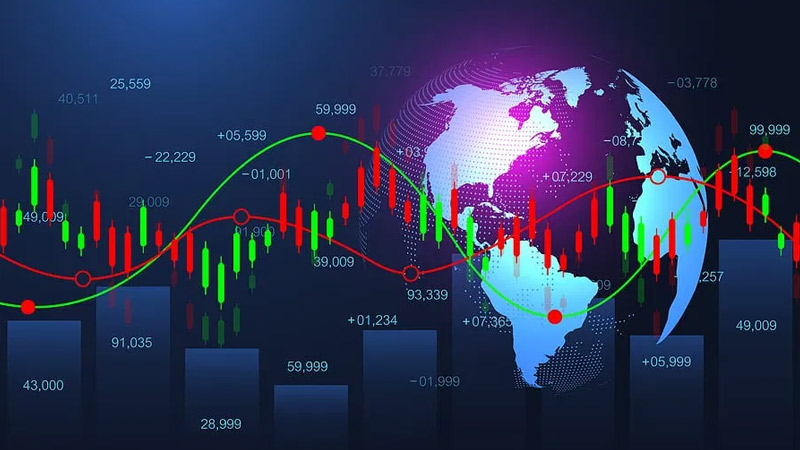
The burgeoning landscape of Decentralized Finance (DeFi) is rapidly evolving, and the emergence of a federal digital currency presents an intriguing convergence. This {potential{ synergy could transform traditional financial systems by exploiting the stability of blockchain technology. A federal digital currency could enhance financial inclusion, simplify transactions, and cultivate individual agency over assets. However, challenges such as privacy concerns must be mitigated to ensure a successful and beneficial integration of DeFi with a federal digital currency.
- Furthermore, the influence on existing financial institutions requires careful evaluation.
- In conclusion, the trajectory of DeFi in conjunction with a federal digital currency remains unclear, presenting both challenges for innovation and evolution within the global financial infrastructure.
Comparing ZAR and AVAX
copyright investors exploring diverse opportunities are continuously analyzing different blockchain platforms. Two prominent choices in this landscape are the South African Rand (ZAR) and Avalanche (AVAX). While both possess unique strengths, understanding their key variations is crucial for making informed investment decisions. ZAR, a fiat currency, offers stability, but its integration with blockchain technology remains limited. In contrast, AVAX, a decentralized blockchain platform, provides scalability and supports a thriving ecosystem of decentralized applications (copyright).
- Considerations such as transaction expenses, network security, and community adoption play a vital role in this comparative analysis.
Ultimately, the most appropriate choice between ZAR and AVAX depends on an investor's personalized needs and risk tolerance.
Avax Price Prediction 2030: Navigating the Future of Decentralized Finance
The future of decentralized finance (DeFi) is bright of potential, with Avalanche (AVAX) emerging as a prominent contender. As we look ahead to 2030, visionaries are offering to gauge the trajectory of AVAX's price.
A multitude of factors will influence the value of AVAX in the coming years, including: the growth of the DeFi ecosystem, regulatory developments, technological innovations, and macro market sentiment.
Optimistic forecasts suggest that AVAX could climb in value, potentially reaching new all-time highs as DeFi adoption continues. However, pessimistic analysts advise that regulatory hurdles and market volatility could limit AVAX's growth.
Finally, predicting the price of any copyright in 2030 is a complex endeavor. The success of AVAX will depend on its ability to transform to the changing landscape of DeFi and attract the trust of users and investors.
The Bitcoin's Meteoric Rise
Stepping back in time to 2012, we find a period marked by rapid growth and significant price swings. Pioneering investors observed Bitcoin's value soar to new heights, seizing the attention of both enthusiasts and doubters. The motivations behind this boom were a mix of factors, including increasing recognition among businesses, innovative technological developments, and the hope of a decentralized financial network.
The Rise of Digital Currencies: Tracing the Path from ZAR to Bitcoin
Digital currencies have undergone a dynamic evolution since their initial beginnings. Early experiments like the Electronic Cash system in the late 1980s paved the way for later innovations. One of the precursors to modern digital currencies was ZAR, a electronic payment system developed in the early 1990s. ZAR, however, was confined in its scope and adoption.
The emergence of Bitcoin in 2009 marked a turning point in the world of digital currencies. Its distributed nature and cryptographic security resonated with many, leading to its widespread acceptance. Bitcoin's success spurred a boom in the development of other cryptocurrencies, each with its own distinctive features and purposes.
From Ethereum's smart contract capabilities to Litecoin's focus on faster transaction speeds, the digital currency landscape has become incredibly varied. This constant development shows no signs of slowing down, with new projects and applications emerging continuously. The future of digital currencies holds activtrades review immense potential, promising to revolutionize various sectors from finance to governance.
Blockchain Breakthroughs: Exploring the Impact of Federal Digital Currencies on Financial Systems
The emergence within federal digital currencies (FDCs) is poised to fundamentally reshape the global financial landscape. Such cryptocurrencies, issued and regulated by central banks, hold the potential to revolutionize traditional banking systems, streamlining transactions and minimizing financial risks.

The implications concerning FDCs are vast and multifaceted. Firstly, they could facilitate greater financial inclusion by providing access to banking services in underserved communities. Secondly, the traceability inherent in blockchain technology could improve regulatory oversight and suppress illicit financial activities. Thirdly, FDCs may be able to boost economic growth by reducing transaction costs and streamlining cross-border payments.
- However, the integration of FDCs also presents a number of challenges. Regulators must carefully consider the potential impact on monetary policy, privacy, and cybersecurity.
- Moreover, the success of FDCs will depend public trust and adoption.
- Awareness campaigns will be essential in mitigating concerns and fostering widespread acceptance of this groundbreaking technology.
Ultimately, the impact of FDCs on financial systems remains to be determined. Yet, their possibility to transform the way we bank is undeniable. As this development continues to evolve, it will be fascinating to observe its evolution and their profound influence on the global economy.
Beneficial
www.forex.com